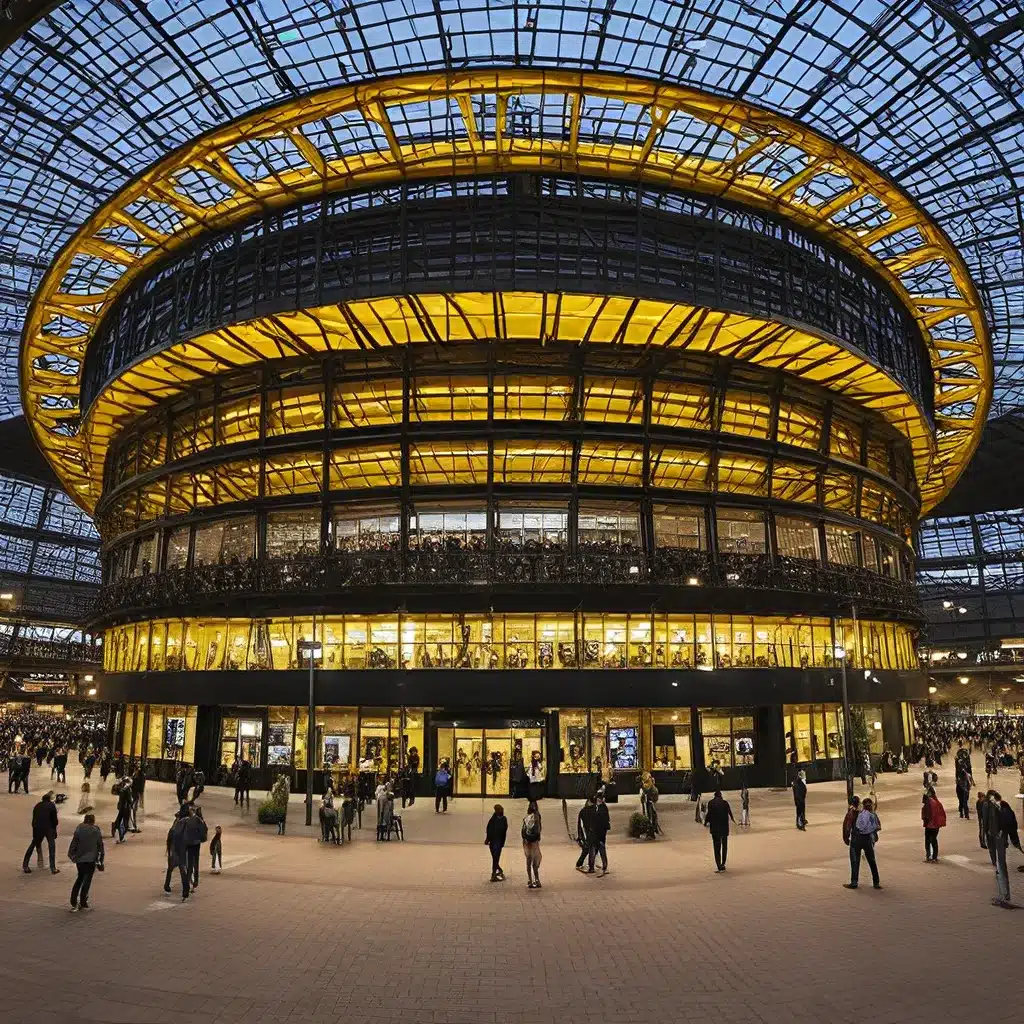
The Iconic Home of Borussia Dortmund
Signal Iduna Park, formerly known as Westfalenstadion, is the awe-inspiring home stadium of the renowned German football club Borussia Dortmund. Nestled in the heart of Dortmund, this magnificent arena has been a source of immense pride and joy for the city’s passionate fans since its inception in 1974.
A Storied History
The origins of Signal Iduna Park can be traced back to the early 1970s when Borussia Dortmund’s previous home, the Rote Erde Stadium, was deemed too small to accommodate the team’s growing fanbase. The city of Dortmund, recognizing the importance of the club to the local community, decided to invest in a new, larger stadium. Construction began in 1971, and the Westfalenstadion, as it was originally called, was officially opened on October 2, 1974, with a capacity of 54,000.
Over the years, the stadium has undergone several expansions and renovations to keep pace with the evolving demands of modern football. In 2005, the stadium was renamed Signal Iduna Park after the insurance company Signal Iduna acquired the naming rights. The most recent major renovation, completed in 2012, increased the stadium’s capacity to its current size of 81,365, making it one of the largest football stadiums in Germany.
A Unique and Captivating Design
Signal Iduna Park is renowned for its striking architectural design, which seamlessly blends functionality with visual appeal. The stadium’s most distinctive feature is its iconic domed roof, which covers the entire playing field and provides shelter for both players and spectators. This innovative design not only enhances the stadium’s aesthetic but also helps to create an immersive and atmospheric environment for the matches.
The stadium’s exterior is characterized by its sleek, modern appearance, with a combination of glass, steel, and concrete elements. The façade features a striking yellow and black color scheme, which pays homage to Borussia Dortmund’s iconic team colors. The stadium’s distinctive shape and silhouette have become an integral part of the Dortmund skyline, making it a recognizable landmark both within the city and beyond.
The Infamous “Yellow Wall”
One of the most renowned features of Signal Iduna Park is the “Yellow Wall”, the stadium’s legendary South Stand. This massive, single-tiered terrace is the largest standing-room-only area in European football, with a capacity of 25,000 passionate supporters. The Yellow Wall is known for its electric atmosphere, with fans creating an unparalleled wall of sound and visual displays that have become a trademark of Borussia Dortmund matches.
The Yellow Wall’s unique design and placement directly behind the goal create an immersive and intimidating experience for opposing teams. The sheer scale and intensity of the fan support have earned Signal Iduna Park a reputation as one of the most formidable and atmospheric stadiums in the world, making it a must-visit destination for any football enthusiast.
Hosting Iconic Matches and Events
Over the years, Signal Iduna Park has played host to numerous iconic matches and events. In addition to being the home of Borussia Dortmund, the stadium has also served as a venue for several major international tournaments, including the 1974 and 2006 FIFA World Cup, as well as the 1988 and 2024 UEFA European Championship.
Some of the most memorable matches held at Signal Iduna Park include Borussia Dortmund’s historic 4-1 victory over Bayern Munich in the 2012 German Cup final, as well as the team’s thrilling Champions League victories over the likes of Real Madrid and Manchester United. The stadium’s unique atmosphere and passionate fan base have made it a true cauldron of football, where the world’s best teams and players have been tested and challenged.
A Vibrant and Lively Matchday Experience
Attending a match at Signal Iduna Park is an experience like no other. The stadium’s vibrant and lively atmosphere is palpable from the moment you step inside, with thousands of fans eagerly anticipating the start of the game. The pre-match rituals, such as the team’s entrance to the iconic “You’ll Never Walk Alone” anthem, and the synchronized chants and songs of the Yellow Wall, create a truly electric and unforgettable atmosphere.
Beyond the match itself, Signal Iduna Park offers a wealth of amenities and attractions for visitors. The stadium’s concourse is lined with a variety of food and beverage options, catering to a wide range of tastes and dietary requirements. Fans can also explore the Borussia Dortmund museum, which offers a fascinating glimpse into the club’s rich history and culture.
A Hub of Community and Passion
At the heart of Signal Iduna Park’s enduring appeal is the deep-rooted connection it has with the local community of Dortmund. The stadium is not just a venue for football matches but a symbol of pride and identity for the city’s residents, who have a long and storied history with the Borussia Dortmund club.
The stadium’s impact extends beyond the confines of the pitch, with the club and its supporters actively engaged in various community initiatives and charitable endeavors. From youth development programs to local outreach projects, Borussia Dortmund and Signal Iduna Park have become integral parts of the fabric of Dortmund, fostering a sense of unity and belonging that transcends the boundaries of the sport.
Conclusion: A Beacon of Football Excellence
Signal Iduna Park is a true beacon of football excellence, a stadium that embodies the very essence of the sport’s passion, community, and tradition. From its iconic architectural design to its electrifying atmosphere, the stadium has become a hallmark of the Borussia Dortmund experience, captivating visitors from around the world and cementing its place as one of the most remarkable football venues in the world.
As you plan your journey to explore the world’s most iconic stadiums, be sure to make a stop at Signal Iduna Park, where you can witness firsthand the magic and majesty of one of football’s true cathedrals.

